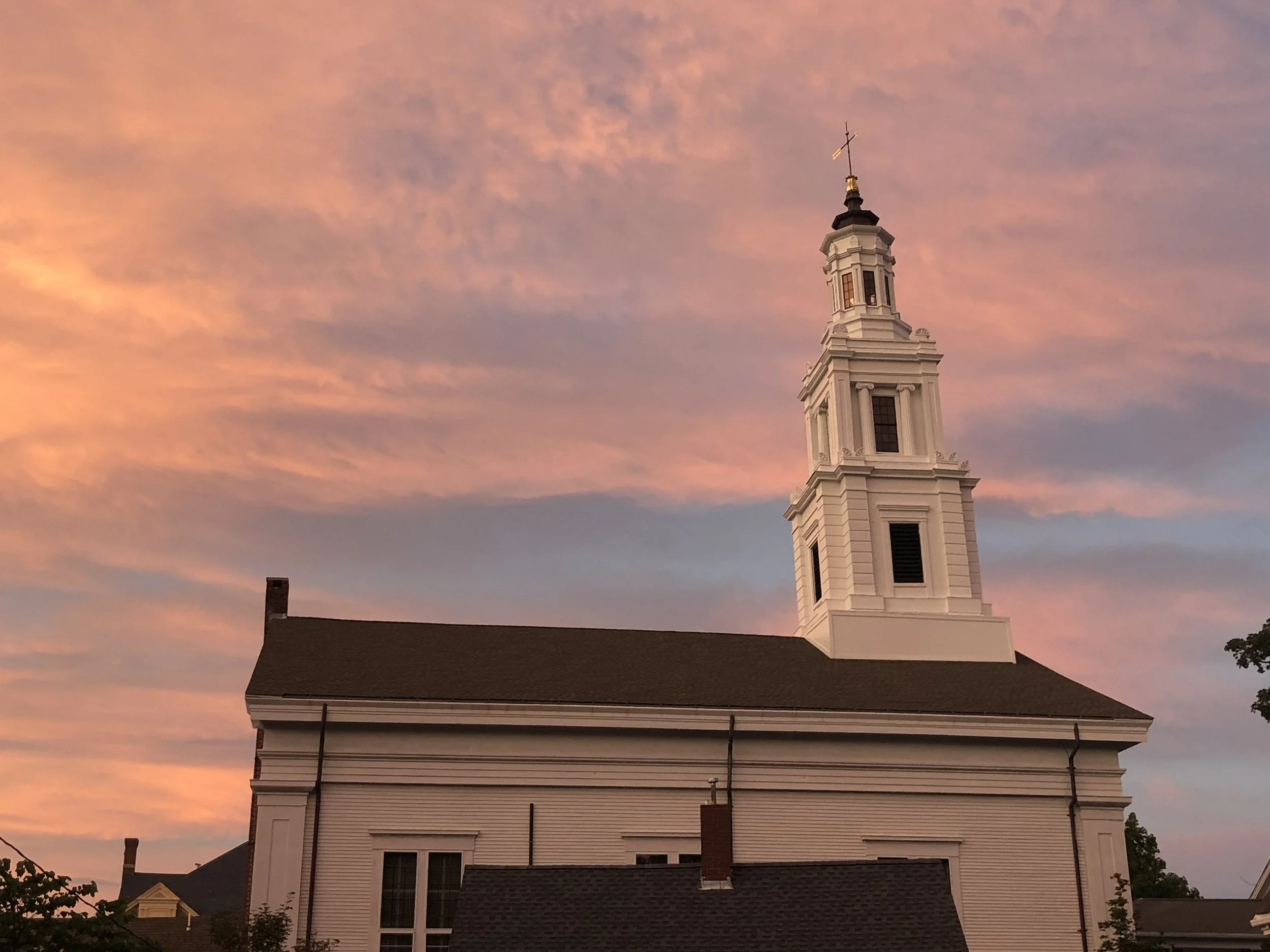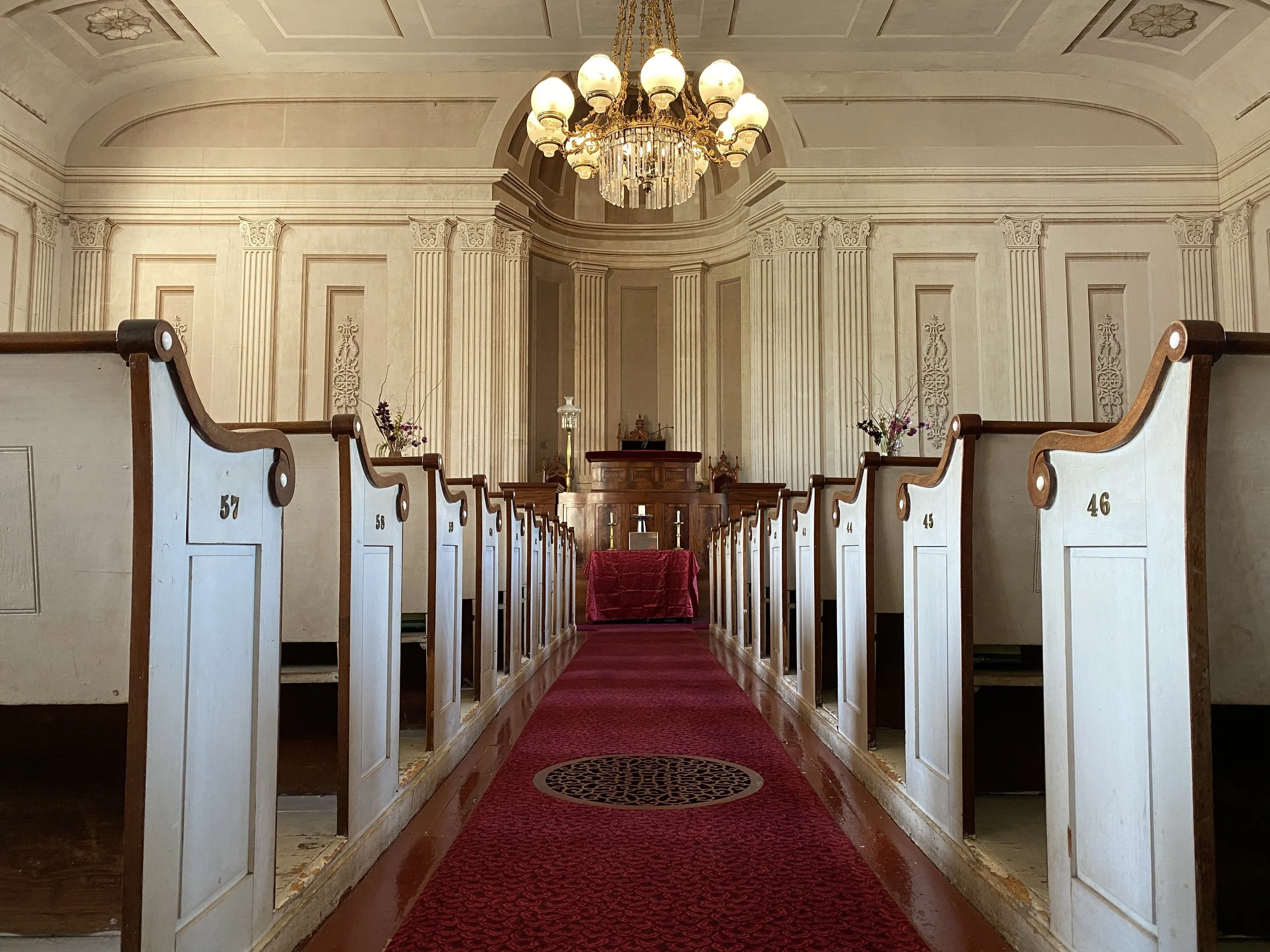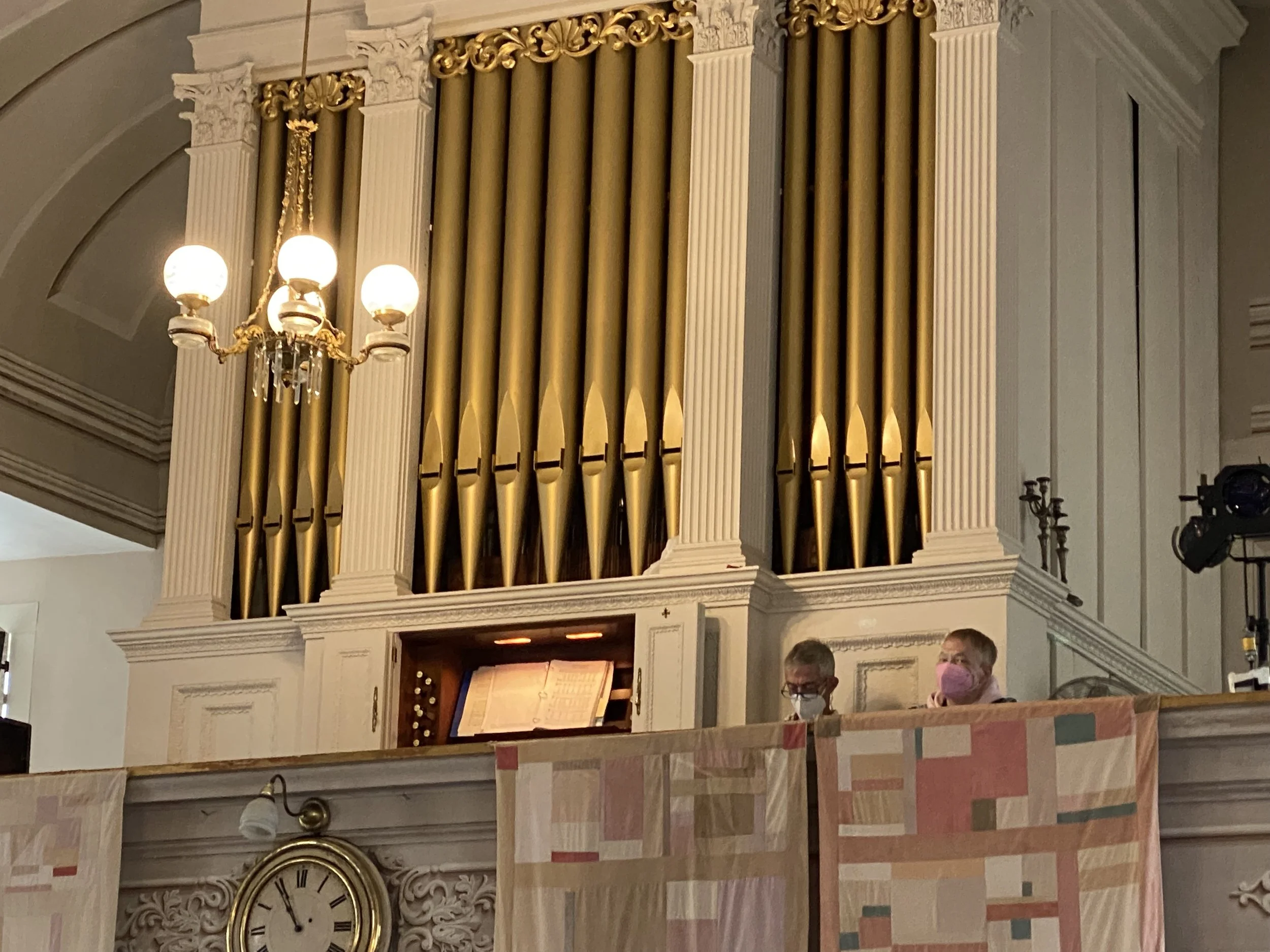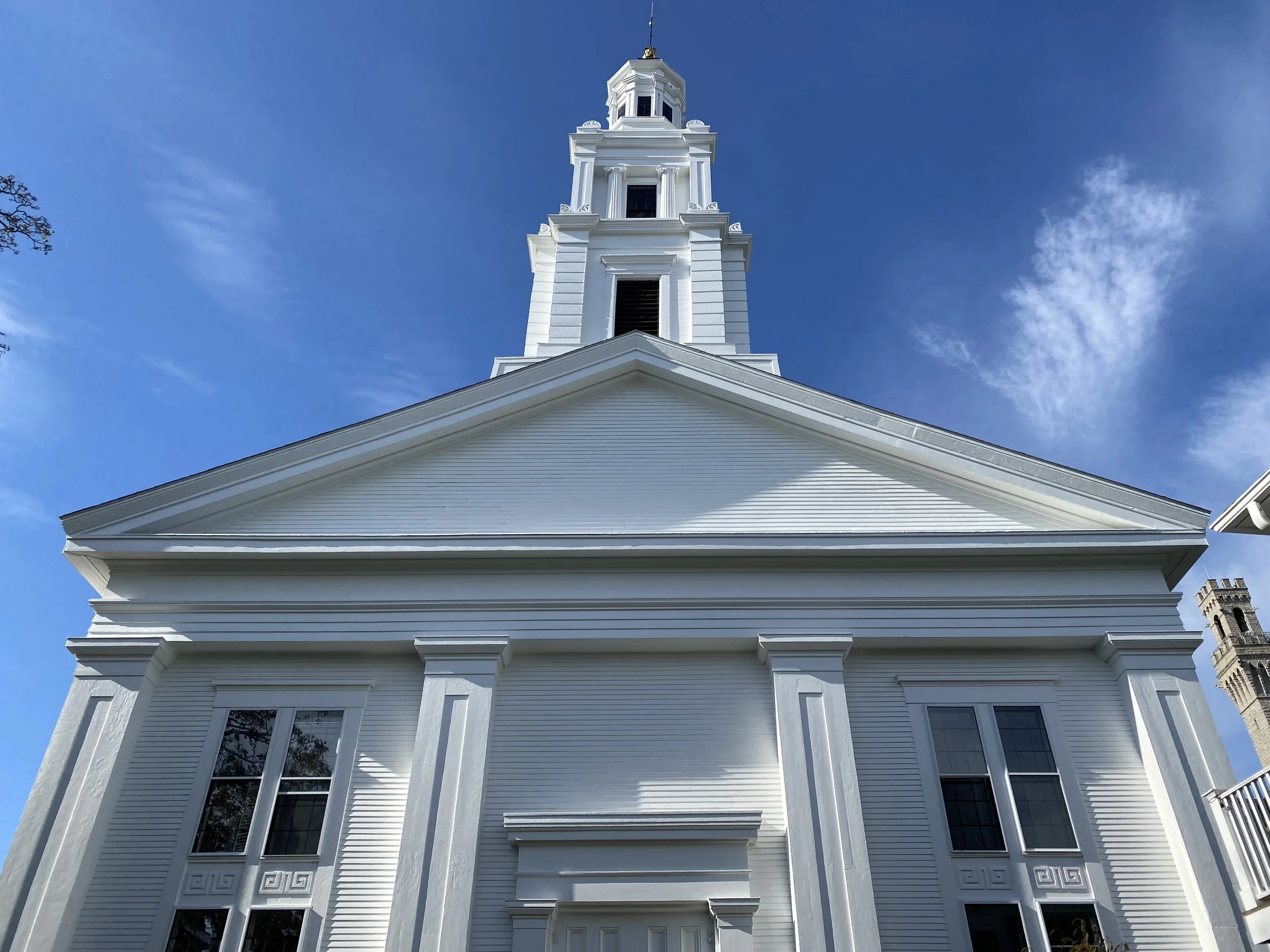Our Meeting House
-
![]()
A spiritual refuge since 1847
Our first church was built in 1829. By 1846 the congregation had outgrown it. Rather than attempt a temporary solution, they decided to erect a new and grander building close to the center of town.The current Meeting House, just a couple of blocks from Town Hall and the MacMillan Wharf, was erected in 1847 by off-duty seamen and fisherman. They received a dollar a day in wages—not a bad sum at the time. It was designed after a church in Fall River Massachusetts in the popular Greek Revival style of architecture, with its clean and elegant lines.
Entering the building, you find yourself in the foyer and facing our downstairs hall, where our offices and meeting spaces are located. Acker-Bosworth Hall is notable for the original broad-planked flooring and the converted gas-lamp light fixtures. It serves as a venue for summer theater and AA, as well as the ever-popular church committees.
-
![]()
The sanctuary and trompe l'oeil
The sanctuary is on the second floor, and our renovations have demonstrated why! Our foundation rests on just a few feet of sand over a high water table. A basement would be impossible in the circumstances, so in order to build a high and lofty ceiling, the sanctuary had to be put above the vestry. It is well-worth the climb, however. Our sanctuary is a work of art, painted in the trompe l'oeil fashion to "fool the eye." Realistic, three-dimensional alcoves, pilasters and panels were painted onto all four walls by Carl Wendte, a young artist from Hanover, Germany. The ceiling was painted as a copy of the dome of the Temple of Jupiter in Athens, Greece. It is said to be one of only five entirely trompe l'oeil interiors in the country.
-
![]()
The Holbrook organ
The Meeting House retains the original pews of white pine, with mahogany rails originally used as ship's ballast. They are decorated with whale ivory medallions. The pew cushions are of maroon velvet. The raised pulpit is of polished Honduran mahogany. We have maintained the original chandelier with its Sandwich glass globes, fonts, and prisms, although it no longer burns whale oil. We also still play the Holbrook organ installed for the church's dedication in 1847. Experts consider it to be one of the few original tracker organs still in use in this country. Thanks to dedicated members and fans of organ music, it was restored and rededicated in 2001. The acoustics of the hall are excellent, and with our concert grand Steinway piano, we are the main venue for classical and acoustic concerts on the lower Cape.
-
![]()
Christopher Wren steeple
Ten years after the Meeting House was dedicated the Christopher Wren steeple was added, giving the church added elegance and visibility throughout the town. But it was not supported by the structure of the building and its weight slowly caused the front of the Meeting House to sink into the sand. In 1999, after 140 years, the steeple was restructured and reinforced, and steel beams were inserted in the chaseways and underneath the foundation. They reach down 14 feet through sand and water to reach another layer of sand, and support the wooden structure.
We invite you to stop in when you are in town for a Sunday service or to view our sanctuary. The historic and unique beauty of the Universalist Meeting House attracts thousands of visitors every year and is a popular location for concerts and weddings. We feel blessed to be the stewards of this rich heritage.
-
![sky ocean and sand dunes]()
Land acknowledgement
The members and friends of the Unitarian Universalist Meeting House of Provincetown acknowledge that the sacred land where we gather and worship has been a site of human activity for over 12,000 years. This land is the territory of the Wampanoag, the People of the First Light, who have stewarded this land for hundreds of generations.
Today, Cape Cod is home to the Mashpee Wampanoag Tribe, with 2,600 enrolled citizens.
As the first landing place of the Pilgrims, we recognize the theft, violence, and repeated violations of sovereignty and territory that have impacted the original inhabitants of this land and their descendants for 400 years. We extend our respect to citizens of the Wampanoag Nation who live here today, and to their ancestors who have lived here for over five hundred generations, and to all Indigenous people.
We also affirm that this acknowledgement is insufficient. It does not undo the harm that has been done and continues to be perpetrated now against Indigenous people, their land and water.
We are grateful for the ocean surrounding us on three sides, for the ponds, dunes, beaches and scrub pines that make up the landscape all around us. May we strive to be better stewards of the land ourselves.




